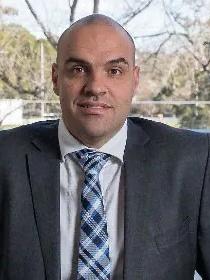ADHD and autism can be equally disabling – so why has the NDIS favoured one?
Your child’s ADHD may be just as debilitating as your neighbour’s kid’s autism. A new study finds both conditions are on the same neurodevelopmental continuum. So why have their supports been funded by NDIS and yours haven’t?

ADHD and autism are on the same continuum of neurodevelopmental conditions requiring similar supports, new research shows, leading to questions about why children diagnosed with autism have had far greater access to publicly funded services through the NDIS.
The groundbreaking study finds executive function problems such as paying attention and controlling impulses are similar across all neurodevelopmental conditions, including attention deficit hyperactivity disorder and autism.
Its lead author, clinical psychologist and University of Sydney professor Adam Guastella, said the report’s findings highlighted the inequity of children with equivalent needs being treated differently under the National Disability Insurance Scheme depending on whether they receive an autism diagnosis or not.
“Our work shows that certain diagnoses get more attention than others and this may be independent of need,” Professor Guastella told The Australian.
“The study shows us there is significant overlap between these neurodevelopmental conditions including autism, ADHD, Tourette syndrome and learning disorders.
“But it is well established that children with autism have been more likely to receive access to NDIS supports than children with ADHD and some other neurodevelopmental conditions.

“The problem with this approach is that many children may have similar needs but they are treated differently because of the label they receive and their ability to access the right assessment,” he said.
Published in Nature Human Behaviour, the research paper examined 180 studies into neurodevelopmental conditions across 45 years, which between them broadly found difficulties in attention and impulse control underpinned ADHD, while problems with switching attention and flexibility of thinking lay behind autism.
This led to a practice over time where different supports and interventions were provided depending on the diagnosis.
In practice over the past decade this meant tens of thousands of children being funded for support services through the NDIS while many children with ADHD missed out.
“Surprisingly, we found most neurodevelopmental conditions showed very similar delays in their executive skills,” said Professor Guastella, who specialises in children’s developmental issues.
“Children with ADHD showed difficulties with attention and impulse control, for example, but so did children with autism, and communication and specific learning conditions,” he said.

“There were very few differences between each neurodevelopmental condition and the type of executive function delay.
“This suggests executive function delay is best considered as a common difficulty for all children with neurodevelopmental conditions. All of these children could benefit from similar supports to improve executive skills,” he said.
Prior to the recent reforms to the NDIS, more than 180,000 children with a diagnosis of autism were provided with service support.
Twelve per cent of all boys aged 5 to 7 in Australia are on the NDIS, and 5 per cent of girls the same age, NDIS data shows.
But for the past decade ADHD has not been on the list of disabilities supported by the NDIS, though many with ADHD are on the scheme through having another primary disability.
The new NDIS reforms negotiated between the federal and state governments in August are designed to return the scheme to its original intent of supporting the most profoundly disabled people in Australia. Access will not be guaranteed through a diagnosis of a particular condition, but through a consideration of functional impairment.
This will mean that “foundational supports” for people with less-profound disabilities will be delivered outside the NDIS. For children with autism and developmental delay, this is likely to be in state-funded settings such as schools and childcare, though they won’t be transitioned out of the scheme until appropriate services are established.
Those foundational supports are still being negotiated between the federal and state governments.
Professor Guastella said he saw much benefit in funding the education system to better support more children with executive delays, independent of their diagnosis.
“It would help to reduce the inequity for children and families struggling to get a diagnosis,” he said.
“The shift here would require a real and substantial investment in educational supports for children, but the long-term pay-off could be significant.”
More broadly, the study finds the siloed nature of support of either autism or ADHD after diagnosis was leaving gaps in the other systems beyond education.
“While we know certain stimulant medications can work well for ADHD, for example, we have less information about how they might help children with other neurodevelopmental conditions who have attention difficulties,” Professor Guastella said.
“And unlike our knowledge about social supports for children with autism, we don’t have much research on how we can help children with ADHD with their social needs.”
He said the two neurodevelopmental conditions needed to be considered along a continuum, and support services developed accordingly.
“It’s time to establish more integrated systems, supports and strategies for all people with neurodevelopmental conditions for their home, school, play and work,” he said.





To join the conversation, please log in. Don't have an account? Register
Join the conversation, you are commenting as Logout